#Best solution for Iron Deficiency
Explore tagged Tumblr posts
Text

how other quirks and even other side effects of quirks help balance or cancel the side effects of my magnetism out.

Everyone shut up. I'm gonna info dump more quirk facts about my magnetism in bitesizes chunks because I'm making a full documentation and analysis of my quirk but it's literally nowhere near done and I need to get this out there
Cool down
So when I have overdone my quirk usage, my body immediately goes into something called a cool down. This is when the temperature of my body simmers down to a significantly cooler temperature. Because my body operates like a magnet, which means I also operate as a battery and a charger at the same time, so the constant use of power makes my body heaten up. Here's how it works. (Ignore the sudden use of third person)
The science behind it
Marcelynn's entire body works like a magnet, but the outlines of pads on the tips of her fingers like Uraraka as well as a bigger one on the palms of her hands are her main areas of output.
Rubbing her hands together (which is what she does when she wants to create more power) creates static friction ->
which makes heat ->
which is then converted into energy and the more friction she uses, the more it amplifies what energy is stored in her body ->
and then boosts power.
Doing this too much can make my quirk go into overdrive, which means the amount of static friction and energy I have stored into my body is too much for me to physically contain. Signs that show quirk over-use are heavy headaches and heavy limbs, sudden hiccups, twitching, and achey joints. As well as low iron deficiency symptoms such as dizziness, energy loss and fainting.
And a separate sign, overheating.
So when I am taking a break, my body realises this, and my temperature slowly drops to adjust to a cooler temperature that's usually colder than the environment around me. This happens because my body is trying to release all excess energy and static I've stored that my body cannot contain, which shows through the loss of heat.
The chilly issue
Of course, now, this isn't always the best thing for me depending on the environment and the weather I'm in. Going into cool down in already cold environments will make me chilly and cold. This is because her body is trying to refrain her from overheating too much, by comparing the temperature of the environment around me to mine and drops it lower than the environment.
Problem solving
But its okay! There's a solution to this. Anything or person that comes in contact with her that has a higher temperature than her will automatically have their body heat altered and shared with hers to raise her temperature to a comfortable warmth but it lowers theirs in the process too.
To maintain warmth — The solutions
-> Hotot showers and baths
-> Hot packs
-> Heat related quirks
Because both Bakugo and Todoroki have heat related quirks, they both happen to be incredibly complimentary to my cool down and overheating.
The way their quirks would come of aid to me is by being in some sort of physical contact with me. It doesn't have to be much. Even leaning into each other is enough to share and convert coolness and heat to and with each other. But when physical touch comes to you like second nature because of a certain someone's magnetic influence, it seems like instinct and comfort has other plans.
BAKUGO'S [UNINTENTIONALLY] CHOSEN METHODS OF (HEAT) RELIEF? 💭
-> Lying on top of me for maximum efficiency
⤷⌗ — He only does this when he reallllyyy needs to. Like after a long, hard day of training. Sweaty bastard collapsing into me like a dead weight.
-> Sitting close to me, arms interlocked for extra closeness
-> Dropping his head into the crook of my neck because I'm his ice pack
-> Visiting my room after any minor inconvenience
⤷⌗ — By any minor inconvenience, I mean almost all the time.
"Does anyone have any ibuprofen? My head hurts" — The solution
Even Uraraka's anti gravity counters my quirk's heavy headaches, heavy limbs, and dizziness side effects. When Uraraka over uses her quirk, she gets light-headed and queasy, which is actually really funny because of the way her side effects exactly oppose mine, that it takes combining each other's quirks by holding onto the other's hand to cancel out each other's side effects. But thing is, Uraraka has a stronger sense of affection for me since we're close. So..
OCHAKO'S CHOSEN METHODS OF RELIEF?💭
-> Forehead kisses
⤷⌗ — Platonical. Literally a short cutesy "mmwah!" on my head is enough to making me feel light headed
-> Holding hands as a means of syncing quirks
-> Playing w/ each others hair, massaging each others brains
-> Lying on top of each other, or cuddling as a means of grounding
Low on battery? — The solution
Remember when I mentioned energy loss, and fainting in my list of side effects? Well there, too, is a solution for these inconveniences. But first? Check this out… ⌵
Magnetic Influence
Is the name of the literal subconscious "push" or "pull" that people have depending on how strong or weak their magnetic fields sync to my field is and vice versa.
Everybody has a natural magnetic field, but the source of the influence always comes from me the strongest because, well, I'm a magnet. It is that all other magnetic fields react to mine on different levels, negatively or positively depending on how compatible we are and how well we compliment each other. This will determine how attractive I find the other person and if I'm even attracted to them at all (vice versa).
The positivity and how strong my magnetic influence is on someone is usually determined by our dynamics. Compatibility can look like anything mind you, especially positive compatibility which doesn't have to take the form of the conventional idea of what it looks like to be harmonious.
And our dynamics can cover literally anything too like our personality types, quirks, drive, energy (basically our freak), our interests, our pros and cons, our strengths and weaknesses, our specialities and even physical features.
That's why I seem to have high interest in a collective of people -> Uraraka, Bakugo, Deku, Mina, Kirishima and Denki (Not in that order plus Sero is an honorable mention), which ties into the nature of my quirk, pulling towards compatible fields which amplifies and boosts things like my mood, my social battery and my energy in general. Think of it like dopamine seeking in a way, being around each other is incredibly beneficial to both me and the person I am super attracted to because it amplifies their energy just like mine.
❜❛ But, what does it mean when the opposite happens? ❜❛
Are you really tired, or are you just comfortable with me? — The illusion of exhaustion
See It's usually those who you feel the most comfortable with who you seek refuge in and gravitate towards when you're at your lowest, rinsed of all physical and mental strength. Because you know, subconsciously, their presence alone will make you feel better again. And it's also those people whose presence that is so comforting and familiar, it confuses the brain into thinking it's time for bed.
This is the illusion of exhaustion. When you are so used to returning back to orbit the person you've come to associate with the feelings of and comfort so strong that your brain can't tell the difference between that person and home, that it physically makes you relaxed and at ease.
Marcelynn's main sources of recharge being Uraraka, Bakugo, Deku, Mina, Denki and Kirishima (which will be elborated on in the future.) That being said...
MARCELYNN'S METHODS OF RECHARGE?💭
Being within close proximity
-> Parallel play (which is doing something in the same space as someone else but not directly interacting w/ each other)
⤷⌗ — I value my alone time. But when I'm feeling lonely, I love to spend time with my friends whenever I can. I think quality time might be one of my love languages.
⤷⌗ — Home work dates and studying sessions are a really good example.
-> Sitting next to/inbetween her favourite individuals
-> Mainly hanging out w/ "them"
-> Wordless facetime calls
⤷⌗ — Happens a lot w/ Bakugo. He'll call me whilst we're all at our own houses for the break, and we might yap for a bit but it will mostly be quiet on both our ends of the line. He just likes having me around and will find a way to spend time when he can if we can't be in person
Physical touch (reciprocating and receiving)
-> Falling asleep with or against the other
⤷⌗ — Happens whenever Uraraka, Bakugo or Kirishima crash at my room way more often than I'd like to admit... or even when I crash at THEIRS.
-> Linking arms and holding hands
⤷⌗ — Uraraka and Mina are my absolute go-tos for hand holding. Our hands just immediately intertwine with each other the moment we're close. We are like this🤞🏾
⤷⌗ — I mainly link arms w/ Bakugo because he's self-conscious about his sweat even though idgaf .. 💬
-> Leaning against another
⤷⌗ — I do this with everyone in that list. It's like my Y-axis is permanently off balance because of those lot.
⤷⌗ — Midoriya, Uraraka, Mina and even Todoroki leaning into me. While Kirishima immediately relaxes back and adjusts himself to make us both comfortable but Bakugo is lowkey kinda stiff as a stick before he does the same.
-> Hugging / cuddling
⤷⌗ — I say cuddling but most of the time it's just Bakugo barging into my room and tackling me to the bed. Well it's that or I'm sat next to him and he very cooly slings his arm over my shoulders. He totally didn't start doing that because Kirishima did..
-> Having her hair played with
-> Head pats

Conclusions?
Marcelynn's dynamics will be thoroughly explained. Uhm.. yeah, some of them go crazy so get ready for that.
· · ───────── ꒰ঌ·✦·໒꒱ ──────── · ·
ⓘ all rights reserved type shit. No copyrighting or whatever you know the drill.
Mootie tags if yall gaf: @intimidaid @starry-com @angelic-daiquiri @coquettebratzdoll @bendys-wife @hrrtshape @theshifterbride @deepinthegroves
#idk about yall but me ocha and kats are basically made for each other#martini yaps!#mha dr#mha shifter#mha shifting#shiftblr#desired reality#shifters
29 notes
·
View notes
Note
I just had a thought
Silver 🤝 anemic Yuu
Randomly passing out everywhere
They just have a little agreement and it's like "if my body starts fucking me over just look after it for a while pls". So now if you see silver sleeping, you'll probably see yuu sitting down next to him trying to read or something. It's mostly the same the other way around except silver is way more protective and kind of a mother hen when Yuu starts to feel light headed.
"I have a headache"
"did you take your iron supplements?"
"You know I didn't"
"take your iron supplements."
"...No."
This isn't very coherent I'm just thought dumping rn, but I like to imagine yuu helping silver put on concealer to cover up his dark circles and its all cute until they're washing the makeup off for the night and Yuus circles take up like half their face even though they damn near slept 24 hours last night.
Sounds like Silver x Me tbh I saw this ask and actually went to pick up my prescription
But seriously you can't out diet or out sleep a iron deficiency, I could see Silver being very intense about Yuu taking their meds, no matter what it was for. If your problem has a solution then that is something to treasure. If it caused side effects then he'd do his best to help make you comfortable too, he likes taking care of those he loves.
And he'd probably enjoy the help with his makeup I don't think he would be very good at it.
111 notes
·
View notes
Note
It's ferritin-less girl here. I've been to every specialist my physician has sent me to - gynecologist, gastroenterologist, hematologist, you name it. I don't have celiac disease and my pylori test came back negative.
I know about caffeine, tea and alcohol reducing iron absorption. That's why I take my iron supplements minimum 2 hours after I had them. I also take 1 gram of vitamin C every day for about 2 weeks every month to help with period flow and iron absorption. I also regularly take folic acid.
My periods are normal I'd say. I don't bleed in between, no spotting or anything. Had uterus ultrasound, everything was fine.
Talking about iron from food, I eat meat basically every day. Chicken, turkey, beef, and I usually pair it with some kind of vegetable/salad. On weekends I try to eat fish like salmon, tuna.
My physician suggested to keep taking iron supplements and when I'm done, to just keep tracking iron levels and start taking supplements again when it starts to drop again.
Hi, ferritin-less girl! I appreciate the detailed update. It sounds like you’ve been incredibly thorough, which is great (but also frustrating when there’s no clear answer). Since you’ve ruled out the usual suspects, here are a few less commonly discussed factors that might be worth looking into:
Even if you don’t feel inflamed, low-grade inflammation (from things like chronic stress, sleep deprivation, or even mild gut imbalances) can mess with iron metabolism. Inflammation increases hepcidin, a hormone that blocks iron absorption and traps it in storage.
How’s your sleep and stress? If either is off, managing those could help iron levels stabilize.
Iron metabolism relies on copper and vitamin A to transport and store iron properly. Deficiencies in either can lead to stubbornly low ferritin despite good iron intake.
Copper sources: shellfish, nuts, seeds, organ meats, and dark chocolate.
Vitamin A sources: egg yolks, dairy, liver, and orange/yellow veggies (though animal sources are best for absorption).
Even without celiac or H. pylori, low stomach acid or gut microbiome imbalances can impact iron uptake. If you ever have bloating, indigestion, or feel like food “sits” in your stomach, that could be a clue.
Taking a little lemon juice or apple cider vinegar before meals can help with absorption if stomach acid is low.
Even with normal periods, you’re losing more than just iron. Magnesium, zinc, and B12 all play a role in red blood cell production and iron metabolism. If you haven’t already, it might be worth checking zinc and B12 levels, since deficiencies can make it harder to restore ferritin.
Your physician’s approach makes sense — tracking levels and supplementing as needed is a practical solution. But if you’re looking to get ferritin up and keep it stable without relying on supplements forever, these might be some new angles to explore.
11 notes
·
View notes
Text


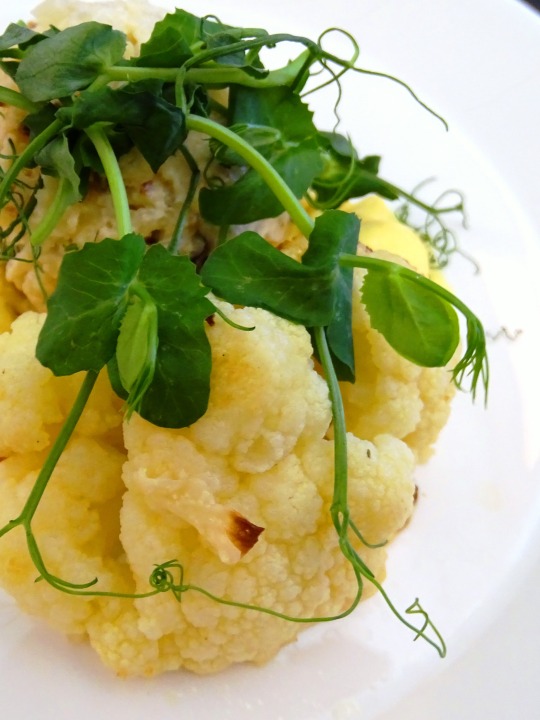


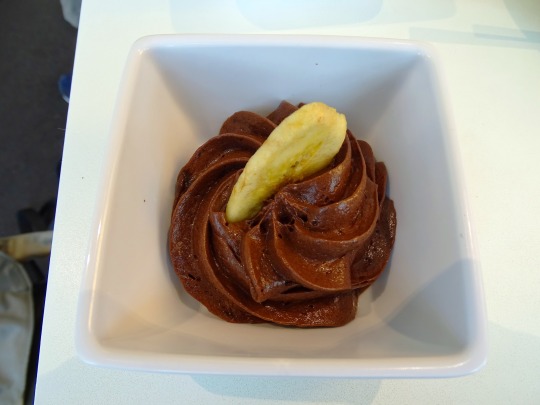
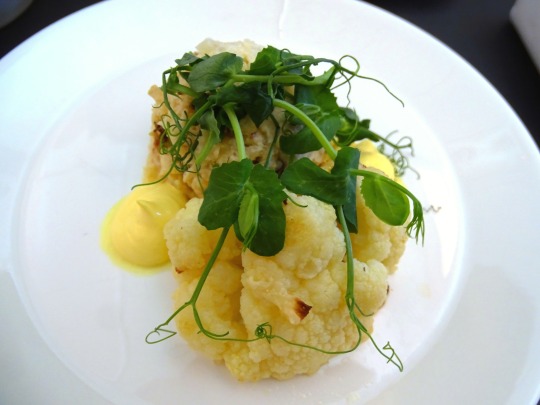


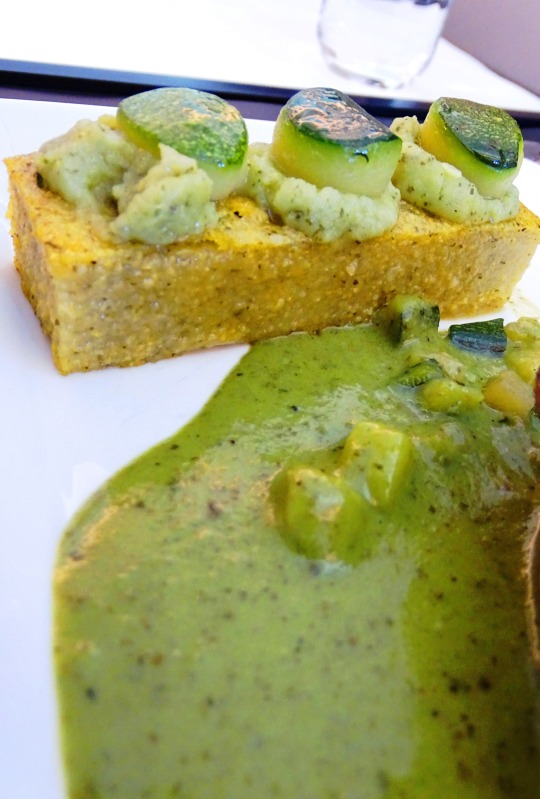
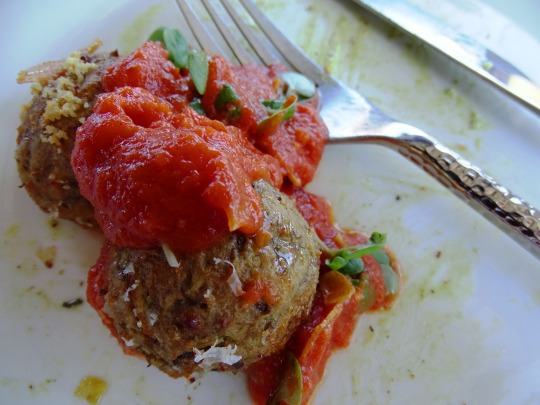


















Plant Power Day
Fitness starts at home. What you eat is what you will look, just as what you sow is what you reap. Eat good food: eat fruits, vegetables, healthy grains, and don’t go for sweet and trite food. - Rakul Preet Singh
Delicious creations from nature's bounty, plates filled with vibrant colors and enticing flavors that fuel the body and support the planet.
There’s a lot of noise about vegetarianism and veganism these days, and while there’s much good coming out of these movements, it can be tricky fully eliminating certain food groups from your diet. Plant Power Day is the perfect solution for those trying to include more foliage in their meals and move towards a more plant-rich diet, as this day is all about prioritizing plant-based foods.
History of Plant Power Day
Although there has been a recent upsurge in diets that avoid animal products, plant powered eating has been around for thousands of years for both practical and ethical reasons. Early proponents of vegetarianism, for example, include the Buddha and the Greek philosopher Pythagoras.
The plant-based industry has really taken off over the past couple of decades or so, with vegetarian and vegan restaurants popping up all over the place and supermarkets adding plenty of plant-based items and ‘free from’ sections to their ranges. During 2018-19, the US market for plant-based foods grew by over 30%, an increase eight times larger than the growth rate of the food market overall, demonstrating the boom in plant powered choices among consumers.
Plant Power Day was launched in 2018 by the European company Alpro, which specializes in plant-based products, in collaboration with the vegan recipe business BOSH!. It was established to encourage people to eat more vegetables and other plant-based foods as part of their daily meals and beverages.
It’s not necessarily about cutting out animal products entirely, but rather about making plants the centerpiece of your diet and considering plant-based options first, either just for the day itself or longer term! Trade out milk for orange juice, hamburgers for eggplant, ice cream for sorbet! These kinds of choices are not only healthier for you, but they’ll also help ensure your eating habits are more conscientious.
The benefits of going plant powered
Generally speaking, people tend to prioritize plant powered consumption for one or a combination of three main reasons: health, ethics and the environment.
Plant-based foods such as tofu, lentils, legumes, nuts, fruits and vegetables tend to be high in fiber and rich in various nutrients, and well-planned plant-based diets have been deemed healthy at every stage of life by dietary organizations such as the American Academy of Nutrition and Dietetics and the British Dietetic Association. Well-planned is the key word here, as relying solely on plants can put people more at risk of certain deficiencies such as iron and Vitamin B12. However, it is perfectly possible to get all necessary nutrients through a well-managed plant powered diet.
Many people focus on the ethical implications of going plant-based, which helps to reduce the consumption and exploitation of animals and the prevalence of factory farming. There are also various environmental advantages, such as decreased water consumption, greenhouse gas emissions and land usage. And by freeing up land usually used to grow crops for feeding livestock, plant powered products contribute to increasing worldwide food production and protecting biodiversity.
Do take care when choosing your plant-rich foods, however, especially if your focus isn’t on health but on making less of an impact on animals and the planet. Carefully research where your food is grown and how it makes it to the table. After all, it doesn’t help the earth if your dinner is transported halfway across the world from fields that are the result of destroying animal habitat and eradicating rainforests.
How to celebrate Plant Power Day
The best way to celebrate Plant Power Day is to have an entire set of meals that are completely plant-based. Also take the time to find out where the plants you’ll be using are sourced from. This allows you to not only have a healthier meal but to make sure it’s good for the planet as well.
Source
#Aspargus with onion#Banana Chocolate Mousse#roasted cauliflower with peppermint and saffron-labneh#polenta with zucchini and basil sauce#stir-fried noodles with pecan#Fried Green Tomatos with Corn Relish#Eggplant Albondigas with tomato sauce and roasted garlic#Roasted Baby Beet Salad#Watermelon Cucumber Salad#artichoke#Tempura Fried Green Beans#PlantPowerDay#7 March#Plant Power Day#travel#original photography#vacation#Kimchi Mandu Jeongol Hot Pot#seaberry and hazelnut mousse#Hiltl Tartar
3 notes
·
View notes
Text
The process of Going Vegan
Going vegan is a lifestyle that can improve your health, the environment, and the welfare of many living beings. Here are some tips to help you understand the process and make it easier.
What is veganism?
Veganism is more than a diet; it is a lifestyle that excludes all animal products, such as meat, dairy products, eggs, and others. Stopping the use of products that come from animals, such as leather, is also part of the process. The reason for choosing this lifestyle varies from person to person, but most agree on ethical concerns, the treatment of animals and the environment. The vegan diet is often confused with vegetarianism. Vegetarians do not consume any meat, but their diet may include animal products. Some consume dairy products, while others may include eggs in their diet. Veganism may seem stricter because it goes beyond food.

Regain your health
One of the biggest motivations for many people is to regain their health and feel good. A well-planned vegan diet can reduce the risk of disease and give you the vitamins and minerals you may need. These diseases include diabetes and even cancer. A recent study compared the effects of a low-fat vegan diet to a conventional portion-controlled diet in individuals with type 1 diabetes (T1D). Participants on the vegan diet experienced improvements in glycemic control and had lower levels of cholesterol. Additionally, body weight decreased in the vegan group. (Talwadekar, 2024)
Think of the environment
Not eating meat also benefits the environment in an impactful way. Animal agriculture is one of the biggest causes of greenhouse gas emissions and water pollution. An article by Gale Environmental Studies Online Collection states that livestock require many more resources to raise than plants do, many people believe that a diet consisting of plants is the best solution for a world with a rapidly growing human population. Compared to growing potatoes or rice, producing beef requires 160 times more land per calorie, and produces 11 times more greenhouse gases. (Blackwell, 2021)

4 Tips for transitioning to a vegan diet: You must begin this change little by little. The changes do not have to be drastic at first. Start adding more plant-based products and at the same time reduce your meat consumption.
1. Seek information: Before making changes to the way you eat you should educate yourself about this diet. It is important to know what foods can provide you with certain nutrients. Reading labels when shopping is very crucial in the transition to a vegan diet. There are products that contain ingredients of animal origin that at first glance are not obvious. Also, reading labels helps us learn about the nutritional value in each product we eat. In addition, we get ideas about calorie content, fiber content and can monitor sugar and sodium levels.
2. Look for substitutes: There are many plant-based alternatives available today. The vegan industry has grown a lot in the last few years making the transition easier for those looking for vegan alternatives for their diet. Eating outside the home can make the process a bit more difficult. Before going out, look for restaurants that offer a menu that includes vegan alternatives.
3. Create a plan: Making a weekly plan may make the process easier and can ensure that you get the nutrients you need. You can use recipe books, and you can get many good recipes on the internet. Do not be afraid to be creative and try new combinations you have never eaten before. To make sure you get the nutrients you need, try to eat a variety of foods, and take supplements. Protein, iron, and b12 deficiencies are some of the concerns of people making this change.
4. Be patient: It is normal to make mistakes or be tempted in the process. It may take time to make the adjustment. It is normal to have cravings, especially at the beginning stage. Look for substitutes for your favorite foods. Use a variety of seasoning to enhance you cooking and take it to the next level.
Deciding to enter this change is a very personal decision that requires preparation and education. You must learn about the benefits it could bring to you and the environment. Health benefits and satisfaction are a step towards bringing change to the world.
Works cited:
Talwadekar, Manasi. “Low-Fat Vegan Diet May Improve Cardiometabolic Health in T1D.” Internal Medicine News, Apr. 2024, p. N.PAG. EBSCOhost, research.ebsco.com/linkprocessor/plink?id=e6b8ab96-9ea3-3f2b-8623-90a64371220a.
Blackwell, Amy Hackney. "Veganism." Gale Environmental Studies Online Collection, Gale, 2021. Gale In Context: Environmental Studies, link.gale.com/apps/doc/NFVPGH435019656/GRNR?u=lincclin_pcc&sid=bookmark-GRNR&xid=67c44948. Accessed 15 Jan. 2025.
4 notes
·
View notes
Text
Castlevania Vampire facts headcanons

.No vampire remembers or actually knows for sure how, when or where or by whom exactly their race came to be. There are certainly suspicions, plenty of guesses and vague ideas but no definite knowledge. So many records of vampire lore were lost overtime and most of the eldest vampires who might know or remember are long gone.
.To become a vampire, a human has to be drained of enough blood to be near death then fed the blood of a vampire. They can't be dead; if the human dies then it won't work. The reason for this is because the physical strain of being near death caused a chemical shift in the body. This chemical reaction then activates the transformation process. Vampire blood then causes a chemical chain reaction where the human cells are rapidly transformed into vampire cells. It's a relatively short but agonizingly painful process- some have likened the pain as being jabbed by dozens of knives whilst being set on fire.
.Newly turned vampires- aka fledglings- can sometimes become temporarily insane as their new predator instincts override their common sense as well as the hunger for blood setting in. A responsible sire should never leave their fledgling alone for too long until they've settled into their new life as a vampire.
.A group of vampires are referred to as a coven, brood or nest. Nest seems to be the most popular among humans.
.Vampire males are fertile while females are sterile. To this day, they have no explanation as to why this is although a popular theory among them is that it was nature's way of culling the vampire race. Therefore, pureblood vampires are made, not born. Some also believe, with trepidation, that fate intended for males to sire dhampirs- human/vampire hybrids- as another method of culling, seeing as how Dhampirs, with their superior strength and power, are the human race's best defense against pure blood vampires
.If a human had scars before becoming a vampire, then they will retain these scars as a vampire. Any injuries though after becoming a vampire won't scar.
.Contrary to popular human belief, a vampire's body temperature actually runs warmer than a human. They wouldn't be such desirable lovers if they were ice cold.
.A vampire's heart beats the same rate as humans.
.Vampires are not undead. They actually laugh and joke amongst each other about how the very idea of this is absurd: "if we were undead, we wouldn't have working digestive tracts and circulatory systems,'' "if we were undead, staking us in the heart would be a moot point,'' "if we were undead, we'd have no brain activity,'' "if we were undead, our males wouldn't be able to produce sperm. Humans really never stop and think about such things.''
.The reason vampires require blood is because they metabolize iron too quickly and they need an abundant source to replace it. It is also why so many are chalk-pale because of the iron deficiency. The need for a lot of iron also mentally compels them to seek blood as a result, sort of like an instinctual tic. They can survive perfectly well on animal blood but to them human blood tastes better.
.Vampires burn up/catch fire in sunlight because, over thousands of years, vampire cells began to mutate, especially as they were introduced into newer generations of fledglings, which caused certain defects and weaknesses, such as a hyper-allergy to UV radiation. Exposure to sunlight causes something similar to a severe chemical, allergic-based reaction which causes the cells to rapidly combust. One thing the vampires no for certain is that the first vampires did not have a weakness to sunlight. They are still trying to come up with a solution to their current predicament.
.One of, if not the biggest enemy of vampires, is werewolves. They're both nocturnal apex predators constantly fighting for territory and food. They're equal in raw strength and both races are capable of magic, with werewolf magic being more attuned to nature and thus seeming more "shamanistic." They've been bitter rivals since anyone can remember and there have never been any attempts on either side to make peace.
.Not all vampires have magic but they all have certain abilities, definitely immortality, enhanced physical prowess such as strength, speed and agility, and the power to turn into a bat and mist. However, over the span of their incredibly long lives, many choose to learn magic. It's just that, like humans, some vampires are just lazy and don't bother to learn and are content with their regular vampire abilities.
Vampires will not be killed by garlic. Their heightened senses are just overpowered by the pungent smell of garlic and they find it repulsive.
.Most vampire brains become rewired to be what we call "OCD.'' They like everything in their lives to be as such and they aren't big on change. They also gain eidetic memories thus they never forget anything.
.Vampires are generally solitary creatures but will band together out of necessity and for safety.
.A vampire's strength and power will grow with age. Vampires over 1000 are practically forces of nature
.Vampires act like they are superior to humans but deep down, they know they will never be the dominant species. They have tried for millennia but have always failed. Humans also hate and despise their kind so trying to behave well with them is nigh pointless. Humans are also a reminder of what they use to be and they hate being reminded of that. Some vampires even hate what they've become and are jealous that they can never be human again. Plus, humans grow old, get sick and die, which causes vampires to disconnect with them as they can no longer fully relate to them in that regard and it would be painful to befriend those you would outlive. But, most of all, they also see humans as hypocrites, acting monstrously in their endless, insatiable greed, arrogance and selfishness, hiding behind false masks of righteousness while condemning vampires as the only monsters.
.Vampirism is a permanent condition, one that can never be reversed. Once the turning process starts, it can't be halted or undone.
.In the modern world, vampires would never feed on drug addicts or those with STDs, as hard drugs and disease "sour'' the blood. The blood of leukemia patients also has a bitter taste.
.With the discovery of iron rich foods like red meat, spinach, nuts etc., and the invention of iron tablets, modern day vampires would need blood less and less. Also, with strong enough sunscreen, they could spend a few hours in the sun.
.Vampires can see in total darkness.
.Vampires who choose to feed solely on animals are, ironically, referred to as "vegetarians."
.Some vampires will make trade deals with some human leaders, offering great wealth and knowledge in exchange for certain influence and protection.
.Vampires learn at a rate five times faster than humans. They can also think faster than a modern day supercomputer.
.Vampires can still eat and digest normal food. Immortality would be agony if they couldn't enjoy the foods they did as humans.
.Vampires still cast a reflection. They also still have a soul.
.They don't have to sleep in coffins, they sleep in normal beds. Some chose coffins simply for the protection- enchanted coffins could prevent vampire hunters from killing them while they sleep.
.Vampires can't use magic to truly bring someone back to life. Only humans are capable of this.
.Vampires only have one true mate in their entire life, one that they can recognize at first sight. If they have one redeeming quality, it's the unwavering, heartfelt love they have for their mates. Should their mate die, the resulting depression usually makes them want to commit suicide. Not always, but life becomes less worthy of living.
.Vampires are creatures of desire and passion, who are freed from inhibitions. Thus, sex is an incredibly important part of their lives. It is unheard of for a vampire to be celibate.
.Vampires can go up to 10 days without sleep.
.The most a vampire can go without blood is a month, possibly 2 or 3. Any longer, and the near starvation drives them into a feral state. The most powerful vampires can go much longer with no dire consequences, but it becomes very uncomfortable.
8 notes
·
View notes
Text
so found out my iron saturation is abnormally low and i'm iron deficient despite taking 2 iron pills a day on top of my multivitamin for the last few months. if i wasn't taking all that i'd probably be in iron infusion territory (which, honestly, would probably make me feel better much quicker! but oh well).
tmi below the cut
found a new gyn that is hopefully going to take all this seriously. to be honest maybe my old gyn would have if i'd gone back to her and told her about my heavy bleeding but i found her totally unresponsive, her only solution to anything i'd tell her about was "get a hysterectomy." Maybe that's going to be the ultimate solution to all of this but like. idk. she just came across as totally disengaged like there aren't several possible intermediate steps including less dramatic surgical options between birth control and hysterectomy in the treatment of endometriosis. at this point i am basically ready to yeet the uterus but i also don't want to catch covid in surgery and cough while recovering that sounds horrible.
whatever!
i've been wondering why i've been feeling like shit and having very little iron despite taking all that iron would be it.
i'm on a pill now to hopefully stop all that while i get imaging and tests to make sure it isn't anything serious (i doubt it).
this is all kind of my own fault for stopping birth control to begin with, but i thought it was impacting me negatively. it might have been but the results of several years of heavy bleeding are worse so i guess the better of two evils it is.
i also found out through doctor google that you're not supposed to take iron with food if you want the best absorption, despite how rough it is on your stomach. So i'm now trying to remember to take it in the middle of the day, so maybe i will feel even better.
#anyway note i am not anti birth control i am pretty sure i was confusing the symptoms of POTS with the pill back a few years ago when i#didn't know enough about POTS and i probably should never have stopped i wouldn't be feeling like crap all the time even taking iron#tmi post
2 notes
·
View notes
Text
Proven Hair Fall Treatments for Thicker, Healthier Hair
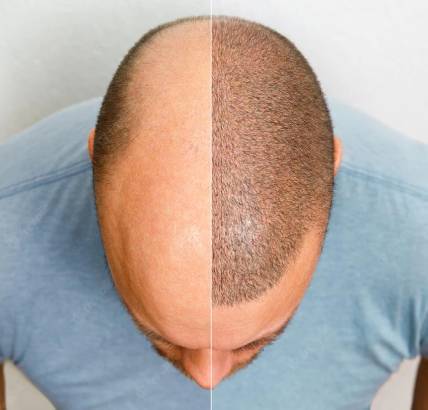
Hairfall is a common concern affecting millions of people worldwide. Factors such as stress, genetics, poor nutrition, hormonal imbalances, and environmental conditions can contribute to hair thinning and loss. Fortunately, modern dermatology offers a variety of effective solutions to address hairfall and restore strong, thick hair. This article explores the best treatments available today, guiding you toward better hair health.
Understanding Hairfall: Causes and Signs
Before discussing treatments, it's important to understand the causes of hairfall. Common reasons include:
Genetic predisposition (Androgenetic Alopecia)
Nutritional deficiencies (Iron, Vitamin D, Protein)
Hormonal changes (Thyroid disorders, pregnancy, menopause)
Medical conditions (Alopecia Areata, Scalp infections)
Stress and lifestyle factors (Poor sleep, crash dieting)
Excessive hairstyling (Heat, chemical treatments)
Early signs of hairfall may include:
Thinning hair
Receding hairline
Visible scalp
Increased hair on the pillow or comb
Consulting the Best Dermatologist in Jodhpur can help diagnose the exact cause and recommend the most suitable treatment plan.
Best Treatments for Hairfall
1. Topical Treatments
Minoxidil
Minoxidil is an FDA-approved topical solution or foam that stimulates hair growth. It prolongs the growth phase of hair and is widely recommended for both men and women.
How it works: Increases blood flow to hair follicles.
Results: Visible improvement typically in 4-6 months.
Hair Growth Serums
Many serums today contain active ingredients like peptides, caffeine, and natural extracts, which nourish the scalp and encourage hair growth.
Use: Apply daily on the scalp.
Benefits: Improves scalp health and reduces breakage.
2. Oral Medications
Finasteride
Commonly prescribed for men, finasteride works by reducing DHT levels (a hormone linked to hair loss).
Effectiveness: Slows down hair loss and promotes regrowth.
Caution: It should only be taken under medical supervision due to potential side effects.
Nutritional Supplements
Deficiencies in iron, zinc, vitamin D, and biotin can lead to hairfall. Supplements tailored to hair health can help bridge nutritional gaps.
Recommended intake: Daily, as per dermatologist advice.
Examples: Biotin tablets, Iron supplements.
3. Platelet-Rich Plasma (PRP) Therapy
PRP therapy is gaining popularity as an effective non-surgical treatment for hairfall. It involves drawing a small amount of your blood, processing it to concentrate platelets, and injecting it into the scalp.
Mechanism: Platelets release growth factors that stimulate hair follicles.
Sessions needed: Typically 3-4 sessions spaced a month apart.
Results: Noticeable thickening and new hair growth over a few months.
Many clinics offering hair transplant in Jodhpur also provide PRP therapy as a complementary service to improve transplant outcomes or treat early-stage hairloss.
4. Low-Level Laser Therapy (LLLT)
LLLT is a non-invasive treatment that uses red light to stimulate hair follicles and promote hair growth.
Procedure: Conducted using laser caps or comb devices.
Frequency: Several times a week at home or in clinics.
Benefits: Painless, safe, and FDA-approved for hair loss treatment.
5. Microneedling
Microneedling uses fine needles to create micro-injuries on the scalp, triggering natural wound-healing processes that boost collagen production and improve hair growth.
Often combined with: PRP or topical treatments for better results.
Best done by: Trained dermatologists to avoid side effects.
When to Consider Hair Transplant
If hairfall has led to significant baldness or thinning that does not respond to other treatments, a Hair Transplant in Jodhpur may be considered.
Types of Hair Transplants
Follicular Unit Extraction (FUE)
Method: Individual hair follicles are extracted and implanted into bald areas.
Benefits: Minimal scarring, quicker recovery.
Follicular Unit Transplantation (FUT)
Method: A strip of scalp is removed and follicles are harvested.
Benefits: Suitable for covering larger bald areas.
Ideal Candidates for Hair Transplant
Stable hairfall pattern
Good donor hair density
Realistic expectations
General good health
It is crucial to consult the Best Dermatologist in Jodhpur specializing in hair restoration to evaluate your suitability for a hair transplant and choose the right technique.
Natural Remedies and Lifestyle Changes
While medical treatments are highly effective, adopting healthy habits can support hair health naturally.
Healthy Diet
Eating a balanced diet rich in:
Proteins (Eggs, fish, nuts)
Iron (Spinach, red meat)
Omega-3 fatty acids (Salmon, flaxseeds)
Vitamins (B12, D, E)
can significantly reduce hairfall.
Gentle Hair Care
Use mild, sulfate-free shampoos.
Avoid excessive heat styling.
Minimize chemical treatments like coloring and perming.
Stress Management
Chronic stress can trigger hairfall. Practices like yoga, meditation, and regular exercise can improve both mental health and hair health.
Importance of Early Consultation
Early intervention plays a critical role in preventing irreversible hair loss. A dermatologist can help identify the underlying cause through:
Scalp examination
Blood tests
Trichoscopy (microscopic hair analysis)
If you're experiencing significant hairfall, booking an appointment with the best dermatologist in Jodhpur can help initiate a personalized treatment plan tailored to your specific condition.
Conclusion
Hairfall can be distressing, but with the right approach, it is manageable. Modern treatments like PRP therapy, microneedling, LLLT, and hair transplants offer promising solutions for those seeking to regain strong, thick hair. Alongside medical treatments, maintaining a healthy lifestyle and early consultation with a qualified dermatologist are essential steps toward long-lasting hair health.
If you're considering a Hair Transplant in Jodhpur or seeking expert advice, consulting an experienced dermatologist will help you make informed decisions and achieve the best possible results.
#HairFallSolutions#StrongerHair#HairCareRoutine#HairRegrowth#StopHairFall#FullerHair#HairHealth#HealthyHairTips
0 notes
Text
Hair Fall in Women: When to Consult a Hair Dermatologist
Hair fall is a common issue faced by many women at some point in their lives. While it is normal to lose 50–100 strands a day, excessive hair loss can be alarming. Stress, hormonal changes, poor diet, and certain medical conditions are just a few of the reasons women may experience sudden or gradual hair thinning. Knowing when to seek professional help can make a big difference in preventing further damage.
Common Causes of Hair Fall in Women
Hair fall can be triggered by several factors, including:
Hormonal Changes: Pregnancy, menopause, or thyroid issues can affect hair health.
Nutritional Deficiencies: Lack of protein, iron, or vitamins can weaken hair roots.
Stress: Emotional or physical stress can cause temporary hair shedding.
Medical Conditions: Conditions like PCOS, autoimmune diseases, or scalp infections can also contribute to hair loss.
Hair Styling Habits: Overuse of heat tools, tight hairstyles, or chemical treatments may damage hair follicles.
When Is It Time to See a Hair Dermatologist?
While occasional shedding is normal, there are signs that you should not ignore. You should consult a specialist in hair dermatology if:
Hair fall has lasted more than 3 months.
Your scalp is visible or thinning patches are noticeable.
You experience itching, redness, or flakiness along with hair fall.
Hair is falling in clumps or bald spots are developing.
There’s a family history of hair loss or medical conditions.
Early consultation helps in identifying the root cause and prevents further loss.
What to Expect During a Consultation
At a hair dermatology consultation, your dermatologist will examine your scalp, ask about your medical history, lifestyle, and perform necessary tests like a blood test or scalp biopsy. Based on the findings, they may suggest treatment options like topical solutions, oral supplements, PRP therapy, or advanced hair restoration techniques.
At Clariv Aesthetics, patients receive expert guidance tailored to their hair needs. The clinic uses advanced technology and proven methods to treat a wide range of hair issues with care and precision.
Why Choose the Right Clinic?
Choosing the best hair clinic in Bangalore ensures you receive accurate diagnosis and personalized treatment. A professional clinic will not only treat the symptoms but also focus on long-term scalp and hair health. Clariv Aesthetics is known for offering trusted solutions and patient-friendly care that delivers visible results.
Final Thoughts
Hair fall in women is a common but manageable issue. Ignoring the signs can lead to long-term damage, but early action can help restore your hair’s strength and volume. If you're facing persistent hair loss, don't hesitate to consult a specialist in hair dermatology.
0 notes
Text
Unlock the Secrets of Faster Hair Growth: Proven Ayurvedic Remedies and Lifestyle Tips

Hair is often seen as a reflection of our overall health and personality. Whether it's thick and voluminous locks or silky, smooth strands, healthy hair is something everyone desires. But with the stress of modern living, exposure to pollution, chemical treatments, and nutritional deficiencies, achieving faster hair growth can be a challenge. Fortunately, Ayurveda offers time-tested solutions to nourish the scalp and promote natural hair regrowth. Let’s explore how Ayurvedic remedies and simple lifestyle habits can help you unlock the secrets of faster hair growth.
Understanding the Ayurvedic Approach to Hair Growth
Ayurveda, the ancient Indian system of medicine, emphasizes balance in bodily energies — Vata, Pitta, and Kapha — to maintain overall health, including the health of your hair. According to Ayurveda:
Vata imbalance leads to dryness and hair thinning.
Pitta imbalance results in inflammation and hair fall.
Kapha imbalance can cause oily scalp and dandruff.
By identifying your dosha and adopting the right hair care regimen, Ayurveda helps restore the health of the scalp and promote new hair growth naturally.
Proven Ayurvedic Remedies for Faster Hair Growth
1. Scalp Massage with Herbal Oils
One of the most effective Ayurvedic practices for hair regrowth is scalp massage with herbal oils. Regular oiling boosts blood circulation to the hair follicles, strengthens roots, and prevents breakage. A powerful choice is the Best Ayurvedic Hair Oil For Hair Growth. Enriched with herbs like Bhringraj, Amla, and Brahmi, this oil nourishes the scalp, reduces dandruff, and stimulates dormant hair follicles.
How to Use:
Warm the oil slightly and gently massage your scalp in circular motions.
Leave it overnight or for at least an hour before washing.
Repeat 2–3 times a week for best results.
2. Ayurvedic Hair Growth Sprays
Unlike chemical-based tonics, Ayurvedic hair sprays use natural herbs and plant-based ingredients that are safe for daily use. The Hair Spray For Hair Growth by Vijayan Master's Ayurveda is specially formulated to revitalize hair roots and promote stronger, thicker strands. It’s lightweight, non-sticky, and can be applied even on busy days.
Benefits:
Easy to use and apply throughout the day.
Strengthens roots and reduces hair fall.
Encourages fresh growth and adds natural shine.
Herbal Ingredients That Stimulate Hair Growth
Ayurvedic hair care wouldn’t be complete without the inclusion of specific herbs known for their healing and regenerative properties.
• Bhringraj (Eclipta alba):
Known as the “King of Herbs” for hair, it improves blood flow to the scalp, revitalizes hair roots, and encourages faster regrowth.
• Amla (Indian Gooseberry):
A powerhouse of Vitamin C and antioxidants, Amla strengthens the hair shaft and adds shine.
• Brahmi:
Soothes the scalp, reduces stress-induced hair loss, and boosts hair density.
• Neem:
Excellent for treating dandruff and scalp irritation, which can hinder hair growth.
• Methi (Fenugreek):
Improves hair texture and strengthens hair from the roots.
Daily Lifestyle Tips for Faster Hair Growth
Along with Ayurvedic products and treatments, your daily habits significantly affect the rate and quality of your hair growth.
1. Eat Hair-Nourishing Foods
Include nutrient-rich foods in your diet such as:
Protein: Eggs, lentils, nuts.
Iron: Spinach, beets, and jaggery.
Zinc & Omega-3 fatty acids: Pumpkin seeds, walnuts, and flaxseeds.
2. Stay Hydrated
Dehydration can lead to a dry scalp and brittle hair. Aim for 8–10 glasses of water daily.
3. Reduce Stress with Yoga & Meditation
Stress is a leading cause of hair fall. Practicing breathing exercises like Anulom Vilom, meditation, and yoga can keep your cortisol levels in check and support hair health.
4. Sleep Well
Hair regeneration mostly happens while you sleep. Try to get 7–8 hours of quality sleep to support natural growth cycles.
5. Avoid Harsh Hair Treatments
Reduce the use of blow dryers, straighteners, and chemical-based shampoos. Choose herbal cleansers and natural conditioners that are gentle on your scalp.
Weekly Ayurvedic Hair Care Routine
You can follow this simple weekly regimen to boost your hair growth: DayRoutineMondayScalp massage with Ayurvedic oilWednesdayApply herbal hair pack (like Amla & Fenugreek)FridayUse Best Hair Growth Spray for daily nourishmentSundayHair rinse with herbal decoction (like hibiscus tea)
Common Myths About Hair Growth (Debunked)
Myth 1: Trimming hair frequently makes it grow faster. Fact: Trimming prevents split ends but doesn’t affect the rate of growth.
Myth 2: Shampooing daily leads to hair loss. Fact: Over-shampooing with harsh products may cause dryness. Opt for Ayurvedic or mild shampoos.
Myth 3: Genetics are the only factor. Fact: Lifestyle, diet, and scalp care play a significant role in your hair’s health, regardless of genetics.
Final Thoughts
Hair growth is not an overnight miracle — it’s a gradual process influenced by how well you care for your scalp, what you eat, and how much stress you carry. The Ayurvedic path to faster hair growth combines powerful herbs, mindful routines, and holistic lifestyle practices that not only restore your hair’s health but also improve your overall well-being.
Incorporate time-tested solutions like the Best Ayurvedic Hair Oil For Hair Growth, or spray-based formulas like the Hair Spray For Hair Growth into your routine to nourish and revitalize your hair the natural way.
Stay consistent, stay patient — and let Ayurveda help you unlock the full potential of your hair.
0 notes
Text
Hair Transplant in Kochi: Cost, Clinics & Recovery Guide

Hair Loss in Today’s World: A Growing Concern
Hair loss has become a widespread issue affecting both men and women across age groups. In Kochi, where stress levels, pollution, and lifestyle changes are rapidly increasing, hair fall has become more than just a cosmetic concern—it impacts self-confidence, professional appearance, and emotional well-being.
While shampoos, oils, and medications may offer temporary relief, they rarely offer permanent results. For people looking for a lasting solution, Hair Transplant in Kochi is now one of the most reliable and result-oriented treatments available.
What Causes Hair Loss?
Before diving into treatment options, it’s important to understand why hair loss happens. Here are the most common causes:
Genetic Factors (Androgenetic Alopecia)
Hormonal Imbalances such as thyroid issues or PCOS
Stress and Lifestyle Habits
Nutrient Deficiencies (Iron, Vitamin D, Biotin)
Overuse of Chemicals or Heat Styling
Post-pregnancy hair fall in women
While both men and women face hair loss, How to Stop Hair Fall for Women has become a pressing question due to the emotional and social effects of thinning hair.
Why Choose a Hair Transplant in Kochi?
Kochi has become a leading center for aesthetic treatments in Kerala, and hair transplant procedures here are affordable, safe, and effective. The city offers a combination of expert doctors, modern clinics, and value-for-money services—making it a smart choice for patients across South India.
Benefits of getting a hair transplant in Kochi:
Cost-effective compared to metro cities
Modern technology like FUE and Bio-FUE
Highly skilled and experienced hair surgeons
Personalized care and natural-looking results
What Is the Cost of Hair Transplant in Kochi?
The Hair Transplant Cost in Kochi can vary depending on several key factors:FactorsImpact on CostNumber of Grafts RequiredMore grafts = higher costType of Technique Used FUE and Bio-FUE are more advancedClinic and Surgeon’s ReputationExperienced professionals may charge moreAdditional Treatments (PRP, etc.)Adds to overall cost
Typically, the cost ranges between ₹30,000 and ₹1,20,000, depending on the complexity and technique.
To get a personalized quote and expert consultation, visit La Densitae Hair Transplant Clinic in Kochi—a trusted name in the field with a reputation for natural results and transparent pricing.
La Densitae – Kochi’s Leading Hair Transplant Clinic
When it comes to the best hair transplant clinic in Kochi, La Densitae is among the most reputable choices. Headed by Dr. Gajanan Jadhao, the clinic offers advanced procedures backed by clinical expertise.
What Sets La Densitae Apart?
Advanced FUE & Bio-FUE technologies
PRP therapy for faster healing and better growth
Experienced team and hygienic clinical setup
High patient satisfaction rate and excellent follow-up care
Affordable packages with no hidden charges
Whether you’re looking for complete restoration or just a hairline correction, La Densitae can tailor a treatment plan based on your needs.
Hair Transplant Techniques in Kochi
1. FUE (Follicular Unit Extraction)
Individual hair follicles are extracted and implanted
Painless, stitch-free, and quick recovery
2. FUT (Follicular Unit Transplantation)
A strip of scalp is removed to harvest grafts
Suitable for large bald areas but slightly more invasive
3. Bio-FUE with PRP Therapy
Combines FUE with Platelet-Rich Plasma for faster healing
Ideal for women and patients with weak follicles
Hair Transplant for Women: What to Know
Women in Kochi are increasingly turning to hair transplants, especially when facing advanced thinning or patchy baldness. In many cases, hormonal changes, stress, or post-pregnancy hair loss cause significant damage.
Before surgery, doctors usually try:
PRP Therapy
Nutritional Supplements
Laser Therapy or Topical Treatments
However, when hair loss becomes extensive, transplantation offers the most natural and long-term solution.
Recovery and Results: What to Expect
Hair transplants are outpatient procedures. Patients can return home the same day and resume normal activities in 2–3 days.
What’s the Timeline?
1–2 weeks: Scalp heals
2–3 months: New hair begins to grow
6–9 months: Visible transformation
12 months: Full results
Proper post-op care ensures optimal results. Avoid heavy sun exposure, harsh shampoos, or scratching the scalp during the healing phase.
Conclusion: Start Your Hair Restoration Journey Today
Whether you’re dealing with hair thinning or complete bald patches, a hair transplant in Kochi offers you a fresh start. With modern techniques, expert doctors, and affordable costs, there’s no reason to delay your transformation.
Ready to reclaim your confidence? Book a free consultation at La Densitae Hair Transplant in Kerala and take the first step toward natural, fuller hair.
0 notes
Text
Strong Hair Starts from Within: Ayurvedic Support for Hair Health with Hairomax Capsule
Hair fall is a concern that affects individuals across all ages and lifestyles. Whether it's due to stress, hormonal fluctuations, poor nutrition, or environmental pollutants, thinning hair or increased shedding can be distressing. While topical treatments like oils and shampoos are commonly used, scientific understanding and holistic traditions both emphasize that hair health begins from within.

According to Ayurvedic principles, hair is a byproduct of bone metabolism and is influenced by internal systemic balance—what modern science might refer to as metabolic and nutritional health. When internal imbalances occur, they often manifest externally as hair loss, premature graying, or weak and dull strands. Addressing these imbalances holistically can play a key role in restoring not only hair density but also scalp health and overall vitality.
This is where Hairomax Natural Hair Fortifying Capsule enters the conversation—a time-tested Ayurvedic preparation known to support internal balance, improve hair strength, and promote healthy regrowth.
The Science Behind Hair Fall: A Matter of Internal Imbalance
Recent studies have shown that hair fall is often not just a cosmetic concern but a biological signal of internal dysfunction. Key causes may include:
Nutrient deficiencies (e.g., iron, biotin, zinc, vitamin D)
Hormonal imbalances (especially related to thyroid or androgens)
Stress and oxidative damage
Poor digestion and toxin accumulation
Chronic inflammation or scalp infections
When such imbalances go unaddressed, hair follicles weaken, the hair growth cycle is disrupted, and visible thinning or shedding increases.
That’s why effective treatment strategies are increasingly focusing on restorative, internal solutions rather than just external care.
What is Hairomax Capsule?
Hairomax Natural Hair Fortifying Capsule is a classical Ayurvedic rasayana (rejuvenative formulation) created under the guidance of Vaidyavachaspathi N.K. Padmanaban Vaidyar, a renowned name in traditional Ayurveda. This formulation is the result of decades of clinical practice and wisdom rooted in ancient healing systems.
It is designed to address internal metabolic disturbances and correct the root causes of hair fall. By nourishing the tissues and enhancing metabolic processes, Hairomax supports strong, resilient, and healthy hair growth from within.
Key Benefits of Hairomax Capsule
Hairomax Capsule offers a comprehensive approach to hair health by combining the principles of Ayurveda with safe, plant-based remedies. Here are some of its key benefits:
Reduces Hair Fall By addressing metabolic imbalances and nourishing hair follicles at a systemic level, the capsule helps reduce daily hair shedding and hair thinning.
Prevents Premature Graying Hair pigmentation depends on melanin production, which is often influenced by internal stress and oxidative damage. Hairomax supports antioxidant activity and melanin balance.
Fights Dandruff and Scalp Imbalance Internal dryness or poor liver function can cause chronic dandruff. This supplement assists in maintaining scalp moisture and microbial balance.
Strengthens Hair from Root to Tip By improving nutrient absorption and blood flow to the scalp, the capsule enhances the strength and shine of hair strands.
Safe for Long-Term Use Being a natural rasayana preparation, Hairomax is designed for safe, continuous use over time with minimal risk of side effects when taken under guidance.
Suggested Routine for Best Results
While Hairomax Capsule works internally, it is best complemented with a proper hair care routine. For optimal outcomes, a combined approach is recommended:
Hairomax Capsule: Take as directed by your physician—usually one or two capsules daily, after meals, for 2–3 months.
Hairomax Oil: Massage into the scalp before bathing. Regular oiling improves circulation, strengthens roots, and enhances shine.
Used together, this internal-external combination supports holistic rejuvenation of the hair and scalp.
Ayurvedic Approach to Hair Wellness
Hair health in Ayurveda is deeply connected to the three doshas—Vata, Pitta, and Kapha. Imbalances in Pitta, for example, are linked to premature graying, while Vata imbalances may result in dry, brittle hair. By correcting doshic imbalances and improving dhatu (tissue) nourishment, rasayana formulations like Hairomax restore vitality not only to the scalp but to the whole system.
This philosophy aligns with the belief that beauty reflects internal harmony—and that addressing the body as a whole leads to lasting transformation.
What Makes Hairomax Different?
Unlike many hair care products that rely on chemical agents or hormone blockers, Hairomax Capsule is rooted in traditional herbal science and crafted without artificial additives. It aligns with the principles of sustainable wellness:
Plant-based and non-toxic
Supports natural regeneration
Suitable for long-term use without dependency
Free from synthetic hormones or steroids
This makes it a safe and gentle solution for those looking to naturally restore their hair’s health and beauty.
Important Considerations
Before starting any supplement regimen, including Hairomax, it’s always advisable to:
Consult a qualified Ayurvedic practitioner or physician, especially if you are pregnant, nursing, or undergoing treatment for chronic conditions.
Maintain a balanced diet rich in proteins, healthy fats, and antioxidants.
Manage stress through mindfulness, yoga, or exercise, as mental health greatly affects hair vitality.
Avoid harsh shampoos and chemical treatments that can aggravate hair fall.
Remember, natural treatments often take consistent use over time to show visible results. Patience and discipline are key.
In Conclusion
Hair fall is not just a surface-level problem—it’s a call to address deeper metabolic and nutritional imbalances. With the right internal support, your hair can regain its strength, resilience, and natural glow. Hairomax Natural Hair Fortifying Capsule offers a gentle yet effective Ayurvedic path to achieving that goal. Backed by decades of trusted practice and rooted in traditional wisdom, it invites you to restore hair health in the most natural way possible.
For more details or to explore the product, visit: https://ayurvedicmall.com/hairomax_natural_hair_fortyfing_capsule
#Ayurveda#HairCare#HairFallSolution#NaturalHairGrowth#HerbalCapsules#Rasayana#AyurvedicHairCare#HealthyScalp#HairomaxCapsule#AyurvedicMall#HolisticWellness
0 notes
Text
Moringa- Nature's Miracle Superfood

The Moringa Plant: The Superfood the World Needs, That Also Grows Like A Weed...

June 17, 2025 – Health & Wellness News In the age of fast food and processed diets, an ancient tree known as Moringa oleifera is making a strong comeback as one of the world’s most powerful superfoods. Nicknamed the “Miracle Tree,” Moringa is earning global attention for its dense nutritional profile, remarkable adaptability, and numerous health benefits—making it a must-have in daily diets around the world. What Is Moringa? Moringa is a fast-growing, drought-resistant tree native to northern India but now cultivated in tropical and subtropical regions across Asia, Africa, Central America, and even parts of the southern U.S. Virtually every part of the plant—leaves, pods, seeds, and roots—is edible or useful for medicinal, nutritional, or agricultural purposes. But it’s the leaves that steal the spotlight. Typically dried and ground into powder form, Moringa leaves are now widely used in smoothies, capsules, teas, and cooking. Where Can Moringa Grow? One of Moringa’s superpowers is its resilience. It thrives in dry, arid conditions where many crops fail, making it ideal for regions with food insecurity. From India to Kenya, Haiti to Honduras, and now increasingly in places like Florida and Southern California, Moringa grows with minimal water and care. Its low maintenance requirements and fast growth make it a sustainable crop that’s already helping communities combat malnutrition and generate income. What’s Inside: A Nutritional Breakdown of Moringa Moringa has earned the “superfood” label for a reason. Here’s what just one tablespoon of Moringa powder typically contains: - 7x more Vitamin C than oranges - 4x more Calcium than milk - 4x more Vitamin A than carrots - 3x more Potassium than bananas - 2x more Protein than yogurt - All nine essential amino acids - Powerful antioxidants like quercetin and chlorogenic acid It’s also rich in iron, magnesium, zinc, and a host of B vitamins, making it one of the most nutritionally dense plants known to science.
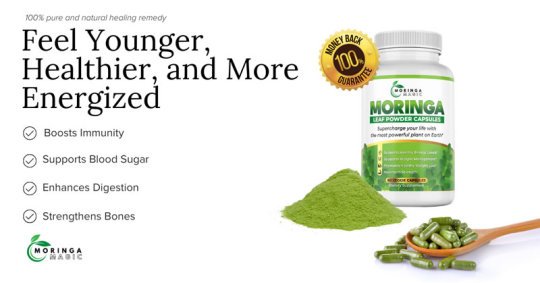
Moringa Proven Health Benefits Scientific studies and centuries of traditional use both point to Moringa’s impressive array of health benefits: - ✅ Boosts energy and stamina - ✅ Fights inflammation - ✅ Reduces blood sugar levels - ✅ Lowers cholesterol - ✅ Supports brain and liver health - ✅ Promotes glowing skin and hair - ✅ Strengthens immunity - ✅ Enhances digestion and gut health Its high antioxidant content also plays a key role in protecting cells from oxidative stress, a major factor in aging and chronic diseases. Why Superfoods Matter In a world dominated by empty calories and nutrient-deficient processed meals, superfoods like Moringa offer a much-needed return to nature’s medicine cabinet. These plants deliver real, whole-food nutrition in compact doses, helping people fight disease, maintain energy, and restore balance in the body. Nutritionists agree that incorporating superfoods into your daily meals—alongside fruits, vegetables, lean proteins, and healthy fats—is one of the best long-term strategies for preventing illness and boosting vitality. Final Thought While no single food is a cure-all, Moringa comes incredibly close. Its ability to nourish, heal, and sustain—combined with its accessibility and affordability—makes it not just a superfood, but a super solution. Whether you're blending it into smoothies, sprinkling it on salads, or taking it in capsule form, adding Moringa to your daily routine could be one of the simplest and smartest health decisions you make.

Read the full article
#aminoacids#anti-inflammatory#antioxidants#Calcium#ChronicDisease#Diet#disease#EatingHealthy#foodasmedicine#FreeRadicals#fruits#globalsuperfoods#Greenjuice#GutBiome#Health#healthyfats#holisticwellness#immunesupport#miracletree#moringa#moringabenefits#moringaleaves#moringanutritionfacts#moringapowder#moringasupplements#moringavitamins#Naturalhealth#naturalhealthcare#naturalsupplements#Nutrients
0 notes
Text
HAIR RESTORATION

Blog Title: Effective Hair Fall Solutions with Focus on Hair Restoration
Hair fall is a common issue faced by millions of people across all age groups. Whether it is due to stress, hormonal imbalance, genetics, or lifestyle factors, losing hair can affect not only your appearance but also your confidence. Thankfully, with the advancement of modern techniques, hair restoration offers reliable and effective solutions to regain healthy hair growth.
Understanding the Root Cause of Hair Fall
Before choosing a treatment, it's important to understand the underlying cause of hair fall. Common causes include hereditary conditions (like androgenic alopecia), thyroid problems, nutritional deficiencies, certain medications, and even frequent use of harsh hair products. A proper diagnosis helps in deciding the right approach for long-lasting hair restoration.
Non-Surgical Hair Restoration Options
For those who are in the early stages of hair fall, non-surgical treatments can be very effective. These include:
Platelet-Rich Plasma (PRP) Therapy: This technique uses the patient’s own blood plasma, rich in growth factors, to stimulate hair follicles and promote hair growth.
GFC (Growth Factor Concentrate) Treatment: A next-gen advancement that strengthens hair roots and controls excessive shedding.
Laser Therapy: Low-level laser devices help to energize hair follicles, improving blood flow and hair density over time.
These methods are painless, have minimal side effects, and are ideal for improving scalp health and supporting natural hair restoration.
Surgical Hair Restoration Techniques
When hair loss becomes more advanced, surgical options like Follicular Unit Extraction (FUE) or Follicular Unit Transplantation (FUT) offer permanent results. In these procedures, healthy hair follicles are extracted from donor areas and implanted in thinning or bald zones. These methods are highly successful and lead to natural-looking, fuller hair.
Lifestyle and Maintenance
While treatments are essential, lifestyle also plays a major role. Eat a balanced diet rich in iron, zinc, and proteins. Avoid excessive use of heat styling tools and harsh chemicals. Regular scalp massages and stress management practices can also contribute to better hair restoration outcomes.
Conclusion
Hair fall can be distressing, but with the right diagnosis and treatment, it is manageable. Whether you choose non-surgical solutions or opt for surgical interventions, today’s advanced hair restoration techniques can help you regain your confidence and bring back your natural hair. Consult a professional to choose the best treatment tailored to your needs.
1 note
·
View note
Text
Hair Loss Treatment in Delhi | Best Hair Transplant Cost in Delhi
Hair loss is more than just a cosmetic issue—it affects confidence, self-image, and emotional well-being. Whether caused by genetics, stress, hormonal changes, or lifestyle habits, hair loss can be distressing. The good news? Effective and long-lasting hair loss treatment in Delhi is now more accessible than ever.
In this blog, we’ll explore the most effective treatments available in Delhi, explain who they are ideal for, and provide detailed information on the best hair transplant cost in Delhi.
Why Choose Hair Loss Treatment in Delhi?
Delhi is home to some of the most advanced hair clinics in India, offering both medical and surgical hair restoration under the supervision of certified dermatologists and trichologists. With world-class technology, affordable pricing, and experienced professionals, Delhi has become a trusted hub for domestic and international patients alike.
Common Causes of Hair Loss
Before starting any treatment, it’s important to understand the root cause. Some of the most common causes of hair loss include:
Androgenetic Alopecia (Male/Female pattern baldness)
Stress and Lifestyle Disorders
Nutritional Deficiencies (Iron, Vitamin D, Zinc, Biotin)
Thyroid Disorders
Post-Pregnancy Hair Fall
Scalp Infections or Dandruff
Autoimmune Conditions like Alopecia Areata
Non-Surgical Hair Loss Treatments in Delhi
1. Minoxidil
A topical solution or foam that improves blood flow to hair follicles and stimulates growth. Effective in early stages of hair thinning.
2. Finasteride
An oral medication for men that blocks DHT (a hormone linked to hair loss). It helps slow down or even reverse hair loss.
3. PRP Therapy (Platelet-Rich Plasma)
One of the most popular non-surgical treatments. Platelets extracted from your own blood are injected into the scalp to stimulate hair growth and repair.
4. GFC Therapy (Growth Factor Concentrate)
An advanced version of PRP with highly concentrated growth factors. Offers better results in less time.
5. Low-Level Laser Therapy (LLLT)
Non-invasive treatment using red light to boost blood circulation and follicle strength. Can be done at clinics or at home with FDA-cleared devices.
6. Nutritional Therapy & Supplements
Supplementing with biotin, omega-3, iron, and collagen can support hair regeneration from within.
When to Consider a Hair Transplant?
If your hair loss has advanced and you’re experiencing permanent bald patches, a hair transplant is often the most effective solution. It provides natural, permanent results using your own hair follicles.
Types of Hair Transplants Available in Delhi
1. FUE (Follicular Unit Extraction)
Individual follicles are extracted from the donor area and implanted in balding zones.
No stitches, minimal downtime.
Popular due to its precision and faster recovery.
2. FUT (Follicular Unit Transplantation)
A strip of scalp is removed and dissected into follicular units.
Suitable for large bald areas.
Leaves a linear scar but often allows for more grafts in one session.
3. DHI (Direct Hair Implantation)
An advanced FUE method where follicles are implanted using a special pen tool.
Offers higher density and more accurate angle placement.
Best Hair Transplant Cost in Delhi
Hair transplant cost in Delhi depends on several factors including:
Number of grafts required
Technique used (FUE, FUT, DHI)
Clinic location and surgeon experience
Additional therapies (PRP, GFC)
Here’s a general breakdown:
No. of Grafts
Estimated Cost (INR)
1000 Grafts
₹25,000 – ₹40,000
2000 Grafts
₹45,000 – ₹75,000
3000 Grafts
₹60,000 – ₹1,20,000
4000+ Grafts
₹90,000 – ₹1,60,000+
Some premium clinics also offer customized packages including consultations, PRP sessions, post-op kits, and EMI options.
Why Delhi is the Best City for Hair Transplant in India
Internationally Certified Surgeons Many Delhi-based surgeons are recognized globally for their skill and innovation.
Latest Technologies Clinics in Delhi use AI-guided imaging, robotics, and painless anesthesia methods.
Affordability with Quality Compared to metro cities abroad, you get the same world-class results at one-third the cost.
Comprehensive Aftercare Follow-up therapies like PRP, mesotherapy, laser, and nutritional guidance are often included.
How to Choose the Right Clinic?
Here’s a quick checklist:
✅ Check surgeon credentials & patient reviews ✅ Ask about technique and technology used ✅ Inspect clinic hygiene standards ✅ Discuss post-op support and follow-ups ✅ Understand the total cost breakdown ✅ Ask to see real before-after results
Final Thoughts
If you’re looking for hair loss treatment in Delhi, there’s never been a better time. From early-stage treatments like Minoxidil and PRP to permanent solutions like FUE and FUT transplants, Delhi clinics offer customized options for every stage and budget.
With skilled hands, advanced tools, and affordable prices, the best hair transplant cost in Delhi ensures you don’t just restore your hair—you regain your confidence and appearance.
0 notes
Text
Regain Confidence with the Best Hair Loss Treatment and Hair Transplant in Kolkata

Hair loss is a common concern affecting millions of men and women across the globe. While it can be triggered by a variety of factors—stress, genetics, hormonal imbalances, lifestyle habits, and medical conditions—the emotional toll it takes is often the same. If you're someone struggling with thinning hair or bald patches and looking for a reliable solution, then hair loss treatment in Kolkata offers advanced, effective options to help you restore not only your hair but also your confidence.
Why Hair Loss Happens
Before diving into treatments, it’s important to understand why hair loss occurs. Common causes include:
Genetic Predisposition (Androgenetic Alopecia): The most common type of hair loss in men and women.
Hormonal Changes: Conditions like thyroid disorders, pregnancy, or menopause can contribute.
Nutritional Deficiencies: Lack of essential nutrients like iron, zinc, and protein.
Stress and Lifestyle: Poor diet, inadequate sleep, and high-stress levels.
Thankfully, modern hair treatment in Kolkata provides personalized care plans that address the root cause of hair loss and offer long-term solutions.
Explore Advanced Hair Loss Treatments in Kolkata
Kolkata has emerged as a hub for top-tier hair restoration procedures, thanks to clinics like Dr. Paul's Advanced Hair & Skin Solutions, a trusted name in the field. Their approach focuses on medically-backed treatments tailored to individual hair types, conditions, and goals.
Some of the most popular hair loss treatments in Kolkata include:
Platelet-Rich Plasma (PRP) Therapy: A minimally invasive procedure where platelets from your blood are injected into the scalp to stimulate hair growth.
Mesotherapy: Nutrient-rich serums are injected into the scalp to nourish hair follicles.
Laser Hair Therapy: Low-level lasers stimulate blood flow to the scalp, encouraging hair regrowth.
Medical Treatments: FDA-approved medications like Minoxidil and Finasteride are prescribed based on the severity and cause of hair loss.
When to Consider Hair Transplant in Kolkata
If non-surgical treatments do not yield desired results, a hair transplant in Kolkata could be the next step. This procedure involves relocating healthy hair follicles from one part of the scalp (usually the back) to the balding areas. It’s a highly effective, permanent solution for significant hair loss.
At Dr. Paul's Hair Transplant Clinic in Kolkata, patients receive world-class care using advanced techniques such as:
FUE (Follicular Unit Extraction): Minimally invasive, with no visible scars and quicker recovery time.
FUT (Follicular Unit Transplantation): Ideal for larger areas of hair loss, offering dense packing of hair grafts.
Bio-IPT (Bio-Integrated Powered Transplant): A cutting-edge technique that enhances the survival rate of transplanted follicles and promotes faster growth.
Why Choose Dr. Paul's Hair Transplant Clinic in Kolkata?
Finding the best hair transplant clinic in Kolkata can be challenging with so many options. Dr. Paul’s stands out for several compelling reasons:
Experienced Specialists: Their team of dermatologists and trichologists is highly trained and brings years of experience.
Customized Treatment Plans: Every scalp is different, and so is the approach.
Advanced Infrastructure: State-of-the-art facilities and latest tools ensure precision and safety.
Proven Track Record: Thousands of successful hair transplants with high client satisfaction.
Whether you’re just starting to notice thinning hair or are experiencing more advanced balding, the experts at Dr. Paul's will guide you through every step.
Understanding Hair Transplant Cost in Kolkata
One of the most common questions patients ask is about the hair transplant cost in Kolkata. The cost can vary based on:
The number of grafts required
Type of transplant (FUE/FUT)
Experience of the surgeon
Quality of the clinic and post-op care
On average, the hair transplant cost in Kolkata ranges from ₹30,000 to ₹1,50,000 or more, depending on individual needs. Dr. Paul’s clinic offers affordable pricing without compromising on quality, making them a go-to choice for many.
Real Stories, Real Results
What sets Dr. Paul’s apart is not just their clinical excellence but also the success stories of their patients. From young professionals to middle-aged men looking to regain their youthful look, hundreds have benefited from their expertise. The results are natural, permanent, and truly life-changing.
Final Thoughts
Hair loss doesn’t have to be permanent. Thanks to advancements in medical science and skilled professionals, you now have access to some of the best hair loss treatments in Kolkata. Whether you're considering a non-invasive therapy or a full-fledged hair transplant in Kolkata, take the first step towards reclaiming your confidence.
Explore the full range of solutions at Dr. Paul's Male Hair Loss Treatment Kolkata and schedule your consultation today.
0 notes